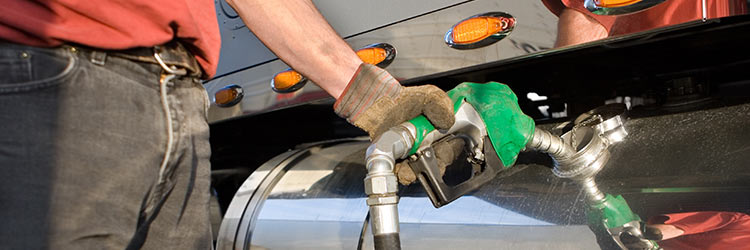Improving Driver Behavior to Maximize Fuel Economy

According to the American Trucking Association, over 70% of all the freight tonnage moved in the U.S. goes on trucks. Without the industry and our truck drivers, the economy would come to a standstill because goods and services would not get to their intended destinations in a timely manner. To move 10.5 billion tons of freight annually requires over 3.4 million heavy-duty Class 8 trucks and over 3.5 million truck drivers. It also takes over 38 billion gallons of diesel fuel to move all of that freight. Put simply – without trucks, America stops.
With such an economic stake at hand in a competitive job bidding arena, fleet owners and managers are constantly on the lookout for ways to improve their operations while safely and efficiently cutting costs. While truck manufacturers are continually producing more efficient vehicles, driver behavior still has the greatest impact on fuel economy which incurs the largest cost for fleets and also the most challenging to measure and improve.
Because a driver’s behavior consists of what he or she does both inside and outside the vehicle, the first step in improving behavior to maximize fuel economy is ensuring their vehicle is properly maintained. Identifying small issues before they cause big problems allows trucks to remain in service and run efficiently for as long as possible. Proper maintenance begins with driver’s pre- and post-trip inspections, which are the easiest steps towards better fleet efficiency, and one that drivers may not be doing properly. When done correctly, these inspection walk-arounds ultimately help lower the number of Compliance, Safety Accountability (CSA) violations and improve maintenance, fuel efficiency and safety levels for fleets of all sizes and types. To ensure that pre- and post- trip inspections are done correctly electronically verified inspections are recommended.
After ensuring a vehicle is maintained and ready for use, curbing driver speed is the most widely recognized behavioral change to save fuel, with 60 to 65 mph range as the sweet spot for many commercial vehicles on today’s highways. On average, a truck traveling at 65 mph instead of 75 mph will experience up to 27percent improvement in fuel consumption. To gain an advantage in today’s transportation industry, drivers and companies need technology to provide feedback, training, and incentive programs that can lead to ideal speeds improve truck fleet management while reinforcing safe and fuel-efficient driving behavior.
Monitoring driver fuel usage by miles per gallon (MPG) and driver speeds alone is not enough to improve operations or drive cost efficiencies. Fleets need to take into account additional data points that influence fuel consumptions and make appropriate adjustments with drivers, trucks and fleet operations. If they don’t, fleet owners are missing an opportunity to maximize their fleet’s fuel efficiency. Fortunately, new technologies are enabling fleets to eke out extra MPGs, which adds up to a lot of money across a long haul and a fleet’s yearly operations. In an era of smart fleet management and connected vehicles, trucking technology for better fuel economy now includes telematics, algorithms, and sophisticated real-time data analysis.
At a minimum fleets should at least be working to track the following:
- Maximize but measure more than just MPG and controlling hard dollar fuel costs
- Creating efficiency scores, by driver, to uncover training gaps
- Normalizing metrics across age of truck and route terrain
- Tracking key metrics that impact fuel costs, such as speeding
- Flagging idle times outside of company policy, by individual truck profile
- Protecting against fuel theft
- Tracking driver behavior and monitor improvement over time
- Quantifying the number and percentage of miles in top gear
- Mapping cruise control
Commercial trucking isn’t going anywhere but fleets that are not innovating to maximize fuel consumption are going to have an extremely hard time with accurate job bidding and ensuring that they maintain profit margins. In this type of competitive market, it comes down to driver efficiency over MPG. Fleets should be harnessing the data from their vehicle’s engine control unit (ECU) and overlaying GPS, elevation, load weight, the posted speed limit and ambient air temperature data. By using telematics and appropriate software tools, fleet’s vehicle speeds, time spent in top gear, use of cruise control, idle time, power take-off operation (PTO) and deceleration can be instantly accessible for analysis. This information, which was previously difficult to track over time, is a helpful management tool that allows fleet owners to look at driver efficiency metrics and determine potential fuel savings opportunities. This, in turn, can be transitioned into a driver incentive program where rewards are given to drivers who achieve the best efficiency scores. The scoring system does not have to be difficult despite the data being captured. It can be purely based on vehicle speeds, time spent in top gear, use of cruise control, idle time, PTO operation and deceleration. With this information in hand fleet managers and decision makers can make data driven decisions to determine actual costs and can ensure that their drivers are operating their vehicles as efficiently as possible.





